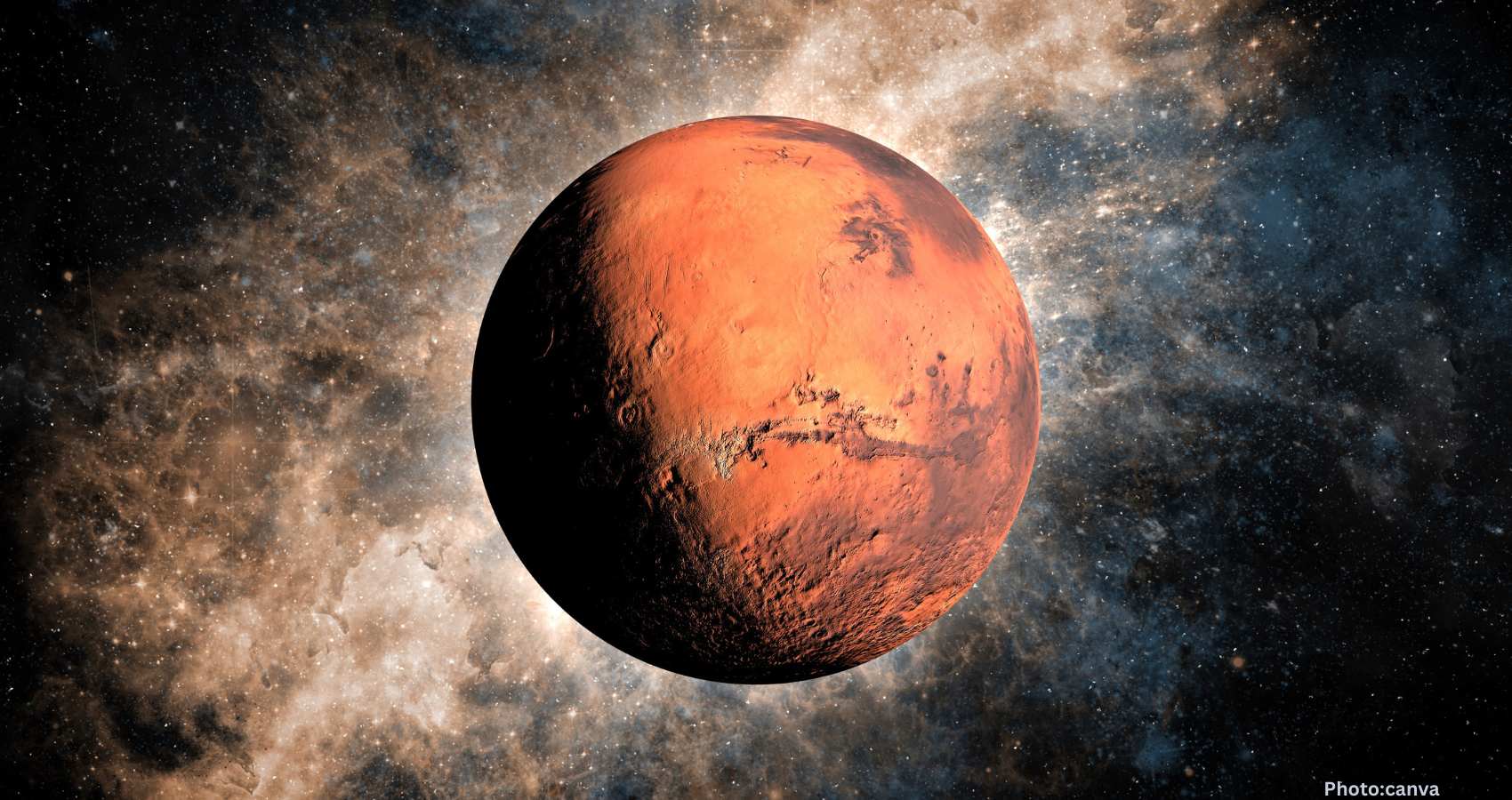Mars’ red color may be linked to its potentially habitable past, according to a new study that identifies ferrihydrite as a key mineral responsible for the planet’s distinctive hue.
A recent study suggests that the reddish hue of Mars is primarily due to a mineral known as ferrihydrite, which forms in the presence of cool water. This finding indicates that Mars may have once had conditions suitable for sustaining liquid water before transitioning to its current dry state billions of years ago.
The research, published in the journal Nature Communications, was partially funded by NASA. It draws on data collected from various Mars missions, including information from several rovers. The study’s authors compared these findings with laboratory experiments that simulated Martian conditions, examining how light interacts with ferrihydrite particles and other minerals.
Adam Valantinas, the lead author of the study and a postdoctoral fellow at Brown University, noted that the question of why Mars is red has intrigued scientists for centuries. “From our analysis, we believe ferrihydrite is everywhere in the dust and also probably in the rock formations,” he stated. Valantinas began this research during his Ph.D. studies at the University of Bern in Switzerland.
While ferrihydrite has been previously considered as a contributor to Mars’ color, this study provides a more robust framework for testing the hypothesis using both observational data and innovative laboratory techniques. “We can essentially make Martian dust in the lab,” Valantinas explained.
Jack Mustard, the study’s senior author and a professor at Brown University, described the research as a “door-opening opportunity.” He emphasized the importance of the ongoing sample collection by the Perseverance rover, which will allow scientists to verify their findings once the samples are returned to Earth. “When we get those back, we can actually check and see if this is right,” Mustard said.
The study’s findings suggest that Mars had a cool, wet, and potentially habitable climate in its ancient past. Although the planet’s current atmosphere is too cold to support life, evidence points to an abundance of water existing billions of years ago, as indicated by the presence of ferrihydrite in Martian dust.
Geronimo Villanueva, Associate Director for Strategic Science of the Solar System Exploration Division at NASA’s Goddard Space Flight Center and a co-author of the study, remarked on the significance of the research. “These new findings point to a potentially habitable past for Mars and highlight the value of coordinated research between NASA and its international partners when exploring fundamental questions about our solar system and the future of space exploration,” he said.
Valantinas added that the researchers aim to deepen their understanding of the ancient Martian climate and the chemical processes occurring both in the past and present. He emphasized the importance of understanding the conditions that existed during the formation of ferrihydrite to address the habitability question: “Was there ever life?”
To answer this question, scientists need to investigate the environmental conditions that allowed for the reaction of oxygen with iron and water, which were markedly different from today’s dry and cold Martian environment. As winds on Mars spread this dust across the planet, they contributed to its iconic red appearance.
This research not only sheds light on Mars’ geological history but also enhances our understanding of the planet’s potential for past life, paving the way for future explorations and studies.
Source: Original article

